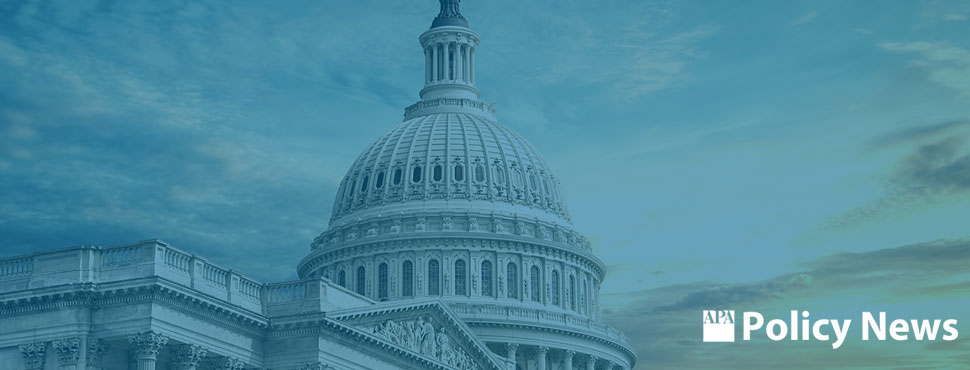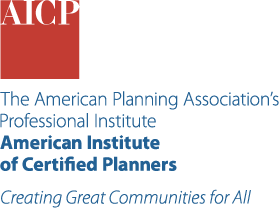Federal Impacts
Budget Battle: Senate, House, and the Trump Administration
How THUD spending bills out of the Senate and House stack up against each other and against Trump’s initial budget proposal

Before lawmakers left Washington on the annual August recess, Congress and the Trump administration laid out three distinct approaches to funding for housing and transportation: Trump's initial budget proposal, the House Appropriations Committee Transportation, Housing and Urban Development bill (THUD), and the Senate Appropriations Committee THUD bill.
As planners continue to advocate for fiscal and policy changes that would secure federal-level support for local planning-led reform, the differences in each of the proposals would have a significant impact on the planning work that can move forward in our communities.
Appropriations vs. Budget: What's the difference?
Each year, the administration submits a proposal to Congress — in this case, Trump's "skinny budget" — in advance of "appropriations," or the process of actually allocating spending dollars.
Only Congress has the authority to set funding for federal programs, meaning the president's budget proposal is not binding. However, budgets are an opportunity for the administration to indicate its priorities and seek to influence Congress. Congress then determines appropriations — providing the legal authority to spend, and the budget — representing the overall financial plan.
In contrast, the bills out of the House and Senate Appropriations Committees are proposals that need to be reconciled and passed via floor vote in both chambers. Once approved, this will become the final numbers of federal funding out of Washington for Fiscal Year 2026.
Here's how Trump's budget proposal stacks up against the House and Senate Appropriations bills.
Trump's Budget Proposal
Of the three spending proposals, the Trump "skinny budget" slashes the most from vital housing and community development programs, including a decrease in Department of Housing and Urban Development (HUD) spending by nearly half from Fiscal Year 2025 levels.
For planners, the complete zeroing out of funding programs like Community Development Block Grants (CDBG), PRO Housing, HOME Investment Partnerships Program, and the Community Development Finance Institutions (CDFI) fund will hit communities hard. Additionally, cuts to homelessness assistance grants and converting tenant rental assistance to a state block grant will force states and localities to fill in gaps left by these traditionally federal-level funds.
House THUD Appropriations Bill
The House of Representatives began its appropriations process with a proposed spending bill funding the Departments of Transportation and Housing and Urban Development (THUD). The committee-approved THUD bill presents a mixed response to the President's dramatic spending cuts.
Housing
On the housing side, the House bill aligns with the Trump proposal by zeroing out funding for HOME, PRO Housing, and Choice Neighborhood — all of which are essential funding programs to support local and state zoning reform efforts. The Trump administration proposed $33.6 billion in HUD cuts from the Trump budget.
Unlike the Trump budget, the THUD bill does not zero out funding for CDBG and rejects the state block grant approach. The House THUD bill also provides an increase in funding for homelessness grant assistance instead of reducing it.
The House bill does cut significant funding for HUD — a 26 percent staffing cut in line with Secretary Scott Turner's reorganization plan.
Transportation
On the transportation side, the House bill gets a bit more complex due to what's known as "advance appropriations" from the Infrastructure Investment and Jobs Act (IIJA).
IIJA provides annual funding through 2026 that is separate from the appropriations process. Republican House Committee members see the IIJA advance funding as justification for the hefty cuts to transportation programs in the THUD bill, as there would still technically be some minimal funding included in the IIJA-funded programs, such as BUILD. Democrats countered that the IIJA funds were intended to be a supplement — not a replacement — for funding, and thus, advance appropriations are not enough to power critical transportation programs.
To add to the confusion, neither Democrats nor Republicans are certain how the administration will choose to allocate and administer the advance funds provided under IIJA. The House Appropriations Committee bill proposes reshuffling IIJA funding out of some programs like Reconnecting Communities and EV charging, and restricts the use of funds that may be used in violation of Executive Orders, including those related to diversity, equity, and inclusion, and regulatory streamlining.
Senate THUD Appropriations Bill
The approved Senate Appropriations Committee version of the THUD bill offers the most hope for planners, with more funding for key housing and transportation programs than either the House bill or the Trump budget proposal.
Housing
Compared to the budget proposal to remove all funding, and the House bill that only includes funding for CDBG, the Senate THUD bill includes funding for CDBG, HOME, PRO Housing, Choice Neighborhoods, and homelessness assistance grants. Federal dollars from each of these programs would empower planners to create more housing options in communities across the country.
The Senate's version, like the House bill, rejects the proposal by the administration to convert existing voucher and tenant assistance programs into a state block grant.
Transportation
On transportation programs, Senate appropriators generally came in with higher funding levels than their House counterparts.
Where the House bill wrestled with how to handle advance appropriations from IIJA, the Senate largely maintained the existing IIJA framework to supplement funding for key programs such as multimodal BUILD grants.
The Senate THUD bill funds the transit Capital Investment Grant program using both FY26 funding and advance IIJA appropriations for a total of $3.55 billion. That represents a decrease from enacted FY25 levels, but a nearly $2 billion increase above the House THUD bill.
For overall highway program funding, the Senate bill represents an increase of $1.27 billion over the House THUD measure.
Both the House and Senate THUD bills included earmarks for transportation and economic development projects, suggesting that congressionally directed spending is bipartisan and perhaps seen as a way of circumventing funding uncertainty on the part of the administration.
Unlike the House bill, the Senate bill maintains funding for the Reconnecting Communities Program, increases Amtrak funding, and does not include policy riders prohibiting funding for high-speed rail.
The Senate bill additionally includes:
- $9.8 million for the National Surface Transportation Innovation Finance Bureau
- Funding to help with transportation associated with the World Cup and the Olympics
- Requirements for DOT to issue updated guidance for the National Electric Vehicle Infrastructure (NEVI) formula program within 30 days, and final guidance within 120 days
- Creation of a DOT-HUD interagency task force focused on accelerating transit-oriented development.

Illustration by Catherine Bixler.
What's Next?
When Congress returns from the August recess, lawmakers have a September 30 deadline for approving funding bills or face a government shutdown. The differences between the House and Senate approaches to funding transportation and housing programs will need to be reconciled by then, but the road to get there remains unclear.
One possible option is passing a Continuing Resolution to keep programs funded at existing levels to buy time to reach a broader compromise. Congress may also try to pass some funding bills in small packages while continuing to work on more controversial programs.
For the moment at least, it seems that both chambers are rejecting some of the largest changes and cuts proposed by the administration's budget. Planners should note that the Senate THUD bill, while imperfect, is currently the preferred approach to funding as it includes critical dollars that will power local reform work that is essential to helping our communities tackle the housing crisis and reach transportation goals.
APA will continue to advocate for federal funding for planning-led reform in the appropriations process, and also through bipartisan legislation like the recently introduced ROAD to Housing Act.
Stay Up to Date
Planners' Advocacy Network
Stay up to date on federal action impacting planning and find out how you can get involved in planning advocacy by joining the Planners' Advocacy Network.
ABOUT THE AUTHOR


